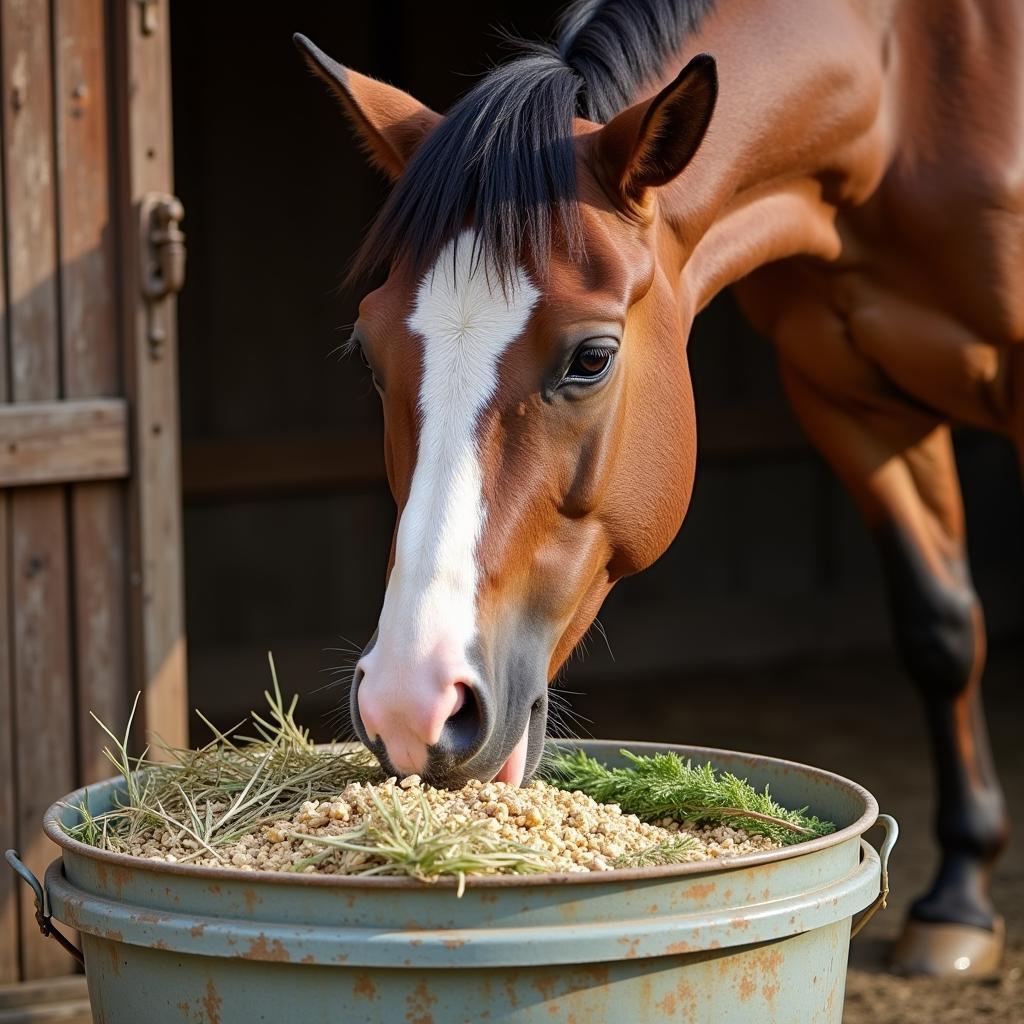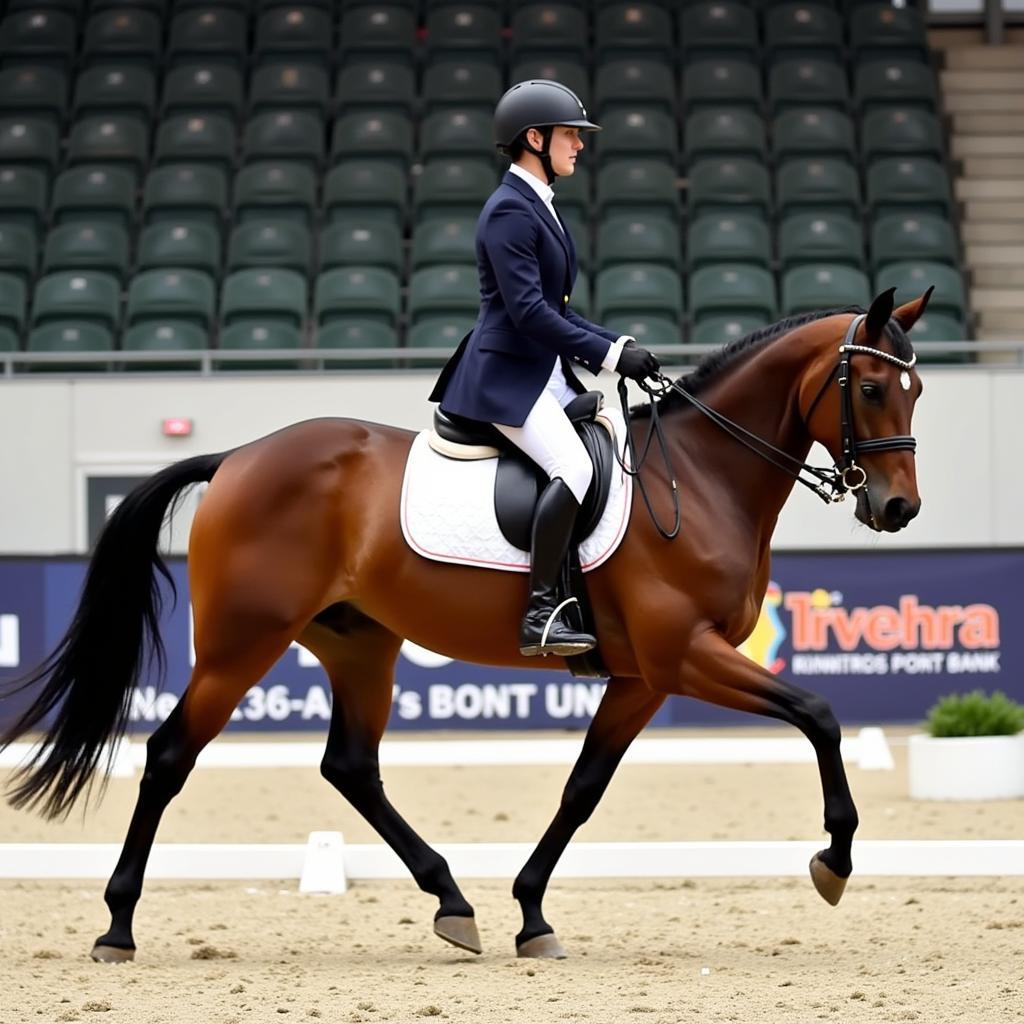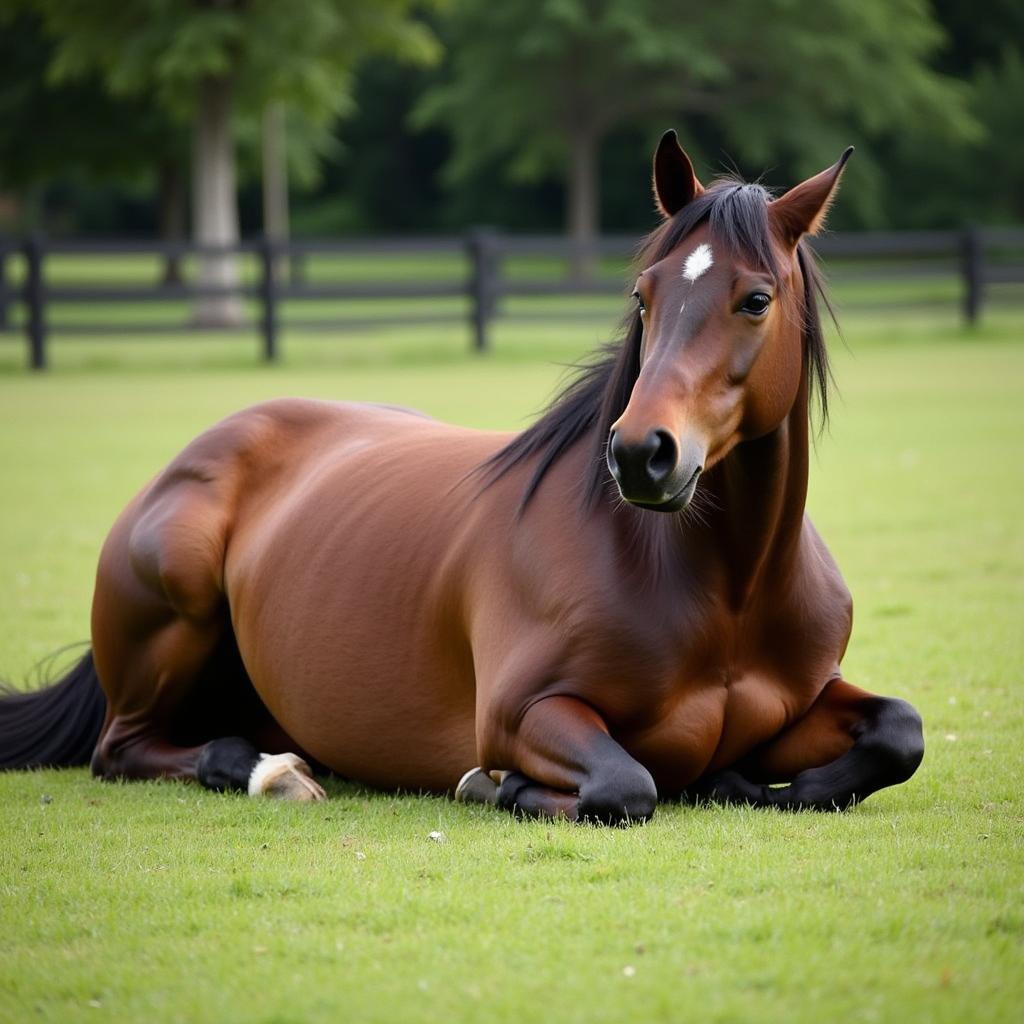Building muscle on horses is a multifaceted process that requires a balanced approach encompassing nutrition, exercise, and overall well-being. Whether you’re aiming for improved performance, enhanced aesthetics, or simply supporting your horse’s health, understanding the fundamentals of equine muscle development is crucial.
Understanding Equine Muscle Anatomy and Physiology
Before diving into the specifics of How To Build Muscle On Horses, it’s essential to grasp the basics of their muscular system. Horses, like humans, have different types of muscle fibers, each playing a unique role in movement and performance. These include slow-twitch fibers, crucial for endurance, and fast-twitch fibers, responsible for power and speed. Knowing this distinction helps tailor training and nutritional strategies for optimal muscle growth.
A balanced diet provides the building blocks for muscle development. This includes ensuring adequate protein intake, as protein provides the amino acids necessary for muscle synthesis.
Just after this paragraph, we’ll discuss the specific dietary needs for building muscle in your horse. It’s important to consider factors like age, workload, and overall health when designing a nutrition plan. For some horses, weight super gain for horses may be necessary to achieve optimal muscle mass.
The Role of Nutrition in Building Horse Muscle
Feeding your horse for muscle growth goes beyond just providing enough calories. The quality and balance of nutrients are equally important. High-quality protein sources, such as alfalfa hay, soybean meal, and certain grains, provide the essential amino acids needed for muscle repair and growth. Additionally, adequate carbohydrates and fats are crucial for energy production, ensuring your horse has the fuel to perform the exercises needed for muscle development. Don’t forget essential vitamins and minerals, which support various metabolic processes involved in muscle growth. Consider adding a bcaa horse supplement to your horse’s diet to aid in muscle recovery and growth.
 Horse Muscle Building Nutrition: Feeding Horse with Balanced Diet
Horse Muscle Building Nutrition: Feeding Horse with Balanced Diet
Exercise Regimens for Equine Muscle Development
Targeted exercises are essential for stimulating muscle growth in horses. Different disciplines and performance goals require tailored exercise programs. For example, dressage horses benefit from exercises that promote collection and strength, while racehorses need training focused on speed and power. Consult with a qualified equine trainer or veterinarian to develop a safe and effective exercise plan for your horse, considering its age, breed, and current fitness level.
Remember, consistency is key. Regular, progressive workouts are more effective than sporadic, intense sessions. Gradually increasing the intensity and duration of exercises allows muscles to adapt and grow over time. Be mindful of your horse’s limitations and avoid overtraining, which can lead to injuries and setbacks.
 Effective Horse Muscle Building Exercises: Horse and Rider During Training Session
Effective Horse Muscle Building Exercises: Horse and Rider During Training Session
Common Mistakes to Avoid
While building muscle on your horse, it’s essential to be aware of common pitfalls. Overfeeding can lead to obesity and other health problems, while inadequate nutrition can hinder muscle development. Similarly, improper exercise techniques can cause injuries and impede progress. Patience is crucial. Building muscle takes time and dedication. Avoid pushing your horse too hard, and be attentive to any signs of discomfort or fatigue. Don’t expect to create a bodybuilder horse overnight.
Importance of Rest and Recovery
Just as crucial as exercise and nutrition is providing adequate rest and recovery for your horse. Muscles grow and repair during periods of rest, so ensuring your horse gets enough downtime is essential for optimal muscle development. This includes providing ample turnout time, comfortable stabling, and managing stress levels.
 Horse Rest and Recovery: Horse Relaxing in Paddock
Horse Rest and Recovery: Horse Relaxing in Paddock
Conclusion
Building muscle on horses requires a comprehensive approach that encompasses nutrition, exercise, and rest. By understanding your horse’s individual needs and implementing a balanced program, you can help them achieve optimal muscle development and overall well-being. Remember to consult with professionals for personalized guidance and to prioritize your horse’s health and safety throughout the process. Building a strong, muscular horse isn’t about shortcuts; it’s about consistent care and attention to detail. If you’re interested in learning more about specific muscle groups, check out our article on horse muscles neck. Looking for a fun gift for the horse lover in your life? Consider a horse toy schleich.
FAQ
- How long does it take to build muscle on a horse?
- What are the best feeds for building muscle on a horse?
- What exercises are most effective for building muscle on a horse?
- How can I tell if my horse is overtrained?
- What are the signs of muscle soreness in horses?
- What supplements can help with muscle building in horses?
- How does age affect a horse’s ability to build muscle?
Scenarios
- Scenario 1: A young horse starting under saddle work needs a program to develop foundational muscles.
- Scenario 2: A performance horse needs to build strength and power for specific disciplines.
- Scenario 3: An older horse needs to maintain muscle mass and prevent atrophy.
Further Reading
- Visit our website for more articles on horse care and nutrition.
- Check out our blog posts on equine exercise and training.
For any support, please contact us: Phone: 0772127271, Email: [email protected] Or visit us at: QGM2+WX2, Vị Trung, Vị Thuỷ, Hậu Giang, Việt Nam. We have a 24/7 customer support team.